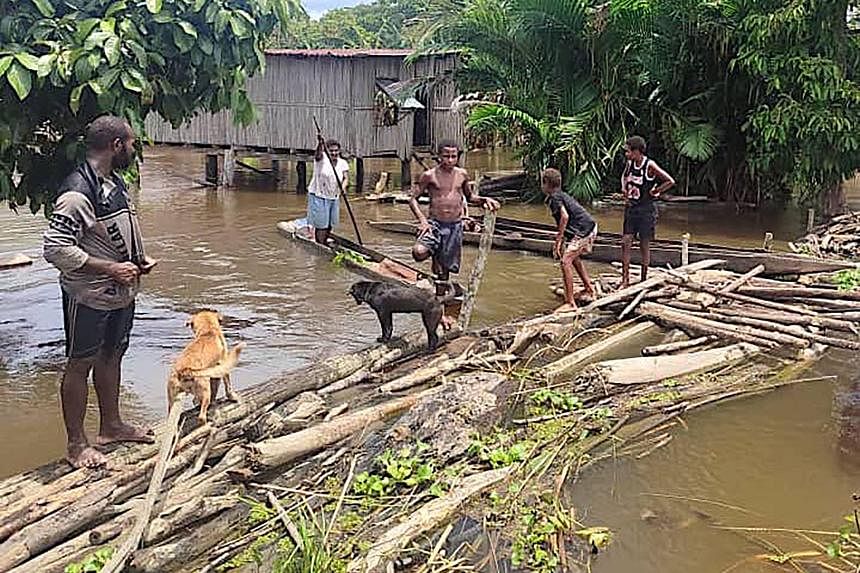SYDNEY – At least five people were killed and an estimated 1,000 homes destroyed when a magnitude 6.9 earthquake rocked Papua New Guinea, officials said on March 25 as disaster crews poured into the region.
Dozens of villages nestled on the banks of the country’s famed Sepik River were already battling soaking floods when the quake struck early morning on March 24.
“So far, around 1,000 homes have been lost,” said East Sepik Governor Allan Bird, adding that emergency crews were still assessing the impact from a tremor that “damaged most parts of the province”.
Provincial police commander Christopher Tamari said the authorities had so far recorded five deaths in the wake of the disaster.
Mr Tamari cautioned that, with emergency crews still venturing into the remote and jungle-clad region, the number of fatalities “could be more”.
Photos showed damaged wooden houses with thatched roofs collapsing into the surrounding knee-high floodwaters, while an old bridge in the provincial capital of Wewak buckled under the strain.
Mr Bird said there was a pressing need to get medical supplies, clean drinking water and temporary shelter into the disaster zone.
Prime Minister James Marape has approved a US$130 million (S$175 million) emergency funding package to help recovery efforts following “a spate of natural disasters” across the country.
“Papua New Guinea has been recently hit hard by (the) earthquake, flooding caused by heavy rain and ensuing landslips, king tides, strong winds and others,” he said in a statement on the evening of March 24, following the quake.
Flooding, landslides and torrential rains earlier in March killed at least 23 people in Papua New Guinea’s interior Highlands region.
The Sepik River twists for hundreds of kilometres through Papua New Guinea’s East Sepik province, flowing down from the jungle highlands and out towards the tropical coast.
Largely untouched by urban development and industry, it is one of the nation’s last pristine waterways – and is the longest river on the island.
Teeming with native species and rare plants, it has in the past been dubbed the planet’s “second Amazon”.
Earthquakes are common in Papua New Guinea, which sits on top of the seismic “Ring of Fire” – an arc of intense tectonic activity that stretches through South-east Asia and across the Pacific basin.
Although they seldom cause widespread damage in the sparsely populated jungle highlands, they can trigger destructive landslides.
Many of the island nation’s nine million citizens live outside major towns and cities, where the difficult terrain and lack of sealed roads can seriously hamstring search-and-rescue efforts.
Papua New Guinea is the world’s 16th most at-risk country to climate change and natural hazards, according to the 2022 World Risk Index. AFP

